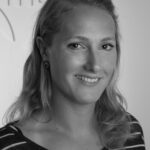The dietary inclusion of spray‑dried plasma proteins has been shown to improve animal performance in terrestrial livestock under challenging conditions, but evidence in fish is inconsistent. This 87‑day trial evaluated the effect of 5% Proglobulin®, a spray‑dried porcine plasma protein, in the diet of juvenile Atlantic salmon (Salmo salar) during seawater transfer. Fish (initial weight 53.8 ± 5.9 g) were stocked at 29 fish per 200-L tank (six replicate tanks per diet) in a recirculating aquaculture system. The trial comprised a 17‑day freshwater phase followed by a 70‑day seawater phase (salinity 31.8 ppt). Control and test diets were formulated to similar crude protein (52%) and lipid (19%) levels. Fish were fed automatically eight times daily to excess, with uneaten feed collected and weighed weekly to determine feed intake. Sampling occurred at trial start, before seawater transfer, and at trial end. Compared with controls, fish fed the plasma‑supplemented diet showed a 61% higher feed intake, greater weight gain (62.1 ± 5.4 g vs. 46.0 ± 3.2 g), higher SGR (1.01 ± 0.07% vs. 0.82 ± 0.04%), but not significantly improved survival after seawater transfer (94.7 ± 3.2% vs. 90.2 ± 5.5%). The results indicate that dietary spray‑dried plasma protein can enhance feed intake and growth of Atlantic salmon during the critical seawater transfer period.
Category: Branches
The infant gut microbiome plays a critical role in the early development of the immune system, brain function, metabolism, and defense against pathogens. However, data from underrepresented populations, like Iceland, with its distinct dietary and lifestyle habits, remain limited. This paper presents the initial findings from the Icelandic Diet and the Infant Gut Microbiome Development (IceGut) study. Fecal samples were collected at multiple time points, representing 328 unique study identifiers, with one to five samples per child, from before the introduction of solid foods up to 5 years of age, and postpartum samples from 214 mothers. Microbial composition and predicted functional potential were assessed using 16S rRNA gene sequencing. Children in the cohort followed typical gut microbiome maturation, but at 1 year of age, they showed a notably higher relative abundance of Blautia than reported in comparable cohorts. This time point marked a transition in both taxonomic composition and predicted functional gene counts. By 5 years, the children had higher observed richness than their mothers but lower Shannon and Simpson diversities. At 2 and 5 years, and in the mothers, samples positive for archaea had significantly higher alpha diversity than samples that tested negative for archaea. Mothers with gestational diabetes mellitus (GDM) exhibited a higher relative abundance of Blautia but a lower alpha diversity. The variance in offspring gut microbiome explained by maternal GDM became progressively stronger over time, being significant at the age of 5 and explaining 2.5% of the variance.
The brown algae Ascophyllum nodosum is harvested from wild sources and used in seaweed meal production. It contains multiple valuable compounds, including polyphenols, polysaccharides and carotenoids that have bioactive properties. In current uses of biomass e.g. as raw material for alginate production, these compounds are not of any special interest, hence there is an opportunity for better utilization of the biomass. Therefore, the aim of the study was to investigate the potential of producing and upscaling production of a byproduct (a targeted seaweed extract produced with mixture of fresh seaweed and water) from the unutilized liquid side-streams obtained within traditional seaweed meal processing. That was performed by evaluating the efficiency of the liquid/solid separation (screw press vs decanter), centrifugation as a secondary separation step, as well as drying methods (spray drying vs freeze drying) on the obtained liquid extracts. Chemical and antioxidant properties were evaluated throughout the alternative processing and mass balances calculated. The results suggest that the decanter was more efficient for separation compared to the screw press due to higher yield of liquid retrieved. The chemical composition and antioxidant properties did not differentiate significantly, neither between the separation methods nor during further processing of the liquids (e.g. centrifugation or drying methods). Furthermore, the alginate remained in the solid phase during separation, and main components extracted with the liquid phase included salt, minerals, polyphenols, and carbohydrates. The results indicate that alternative processing with a decanter as primary separation step could be a feasible solution to meet the demands of full utilization and no-waste policies within seaweed production.
With the increased seaweed production worldwide, there is a need to focus on improved production practices to produce high-quality seaweed biomass, especially if the biomass is intended for high-quality products and human consumption. Multispectral imaging (MSI) is a novel technique used as a quality control tool within the food industry due to its rapid, real-time measurements. Therefore, the study aimed to assess the possibilities of using MSI as a quality control tool within seaweed cultivation to predict the physicochemical (including proximate composition, trace minerals, pH, and color), microbiological (total viable counts (TVC)), sensory, and antioxidant properties of A. esculenta and S. latissima throughout diverse processing and handling. The results showed differences in spectra between species, and species classification got 100 % accuracy when using a Support Vector Machine (SVM) with the spectral data. Furthermore, results indicated that the partial least square regression (PLSR) models developed with cross-validation of the MSI data effectively predicted multiple quality parameters, including pH (R2CV= 0.94, RMSECV = 0.278), carbohydrate content (R2CV= 0.89, RMSECV = 0.76), protein content (R2CV= 0.94, RMSECV = 0.12), ash content (R2CV= 0.80, RMSECV = 0.51), and phenolic content (R2CV= 0.992, RMSECV = 0.24). In addition, the results showed possibilities of using the technology to assess several sensory properties. In conclusion, the results show the potential of using the MSI technology as an effective quality control tool within the seaweed industry to simultaneously evaluate multiple physicochemical properties of brown seaweed biomass.
This study explores the potential of using multispectral imaging (MSI) techniques to predict the freshness of whole gutted Atlantic cod (Gadus morhua) throughout its shelf life during storage on ice. Spectral data were acquired from key anatomical regions – the gills, skin, and eyes – and analyzed using chemometrics methods, including partial least squares regression (PLSR) and artificial neural networks (ANNs). These models were trained to predict sensory evaluations performed by trained panelists using the Quality Index Method (QIM) as well as chemical- and microbiological analyses, total viable counts (TVC) and total volatile base nitrogen (TVB-N). Among the regions analyzed, the gills provided the most accurate predictions of the QIM score, with the ANN model achieving an R2CV = 0.87 and an RMSECV of 2.0. Spectral analysis highlights the role of near-infrared (NIR) wavelengths in capturing spoilage-related biochemical and structural changes, complementing the visible spectrum, which primarily captures color changes. Our findings suggest that MSI combined with chemometric techniques could serve as an efficient, non-destructive alternative to traditional sensory freshness evaluations.
Chitosan is suggested to have prebiotic properties, yet clinical evidence on its in vivo effects on the human gut microbiota and various health factors remains scarce. This study aimed to evaluate the effects of chitosan supplementation on gut microbiota composition and various health factors in Icelandic females. Sixty Icelandic females (aged 26–70; BMI 19.1–35.0 kg/m2) were randomized to a 12-week intervention receiving either 3 g/day of encapsulated chitosan (LipoSan Ultra) (TRG, n = 28) or placebo (PLG, n = 32). Anthropometrics, health factors, endurance, and health status questionnaires were collected at baseline (T1) and post-intervention (T3). All values remained within reference ranges at both timepoints in both groups, except weight, waist circumference, and fat mass, which were above. In TRG, alkaline phosphatase (ALP) levels increased, and fecal consistency shifted toward constipation. 16S rRNA microbial analysis showed decreased diversity/evenness, increased T1–T3 separation by nonmetric multidimensional scaling, and higher Actinobacteriota abundance. Genus level shifts included reduced Blautia, Eubacterium hallii, CAG-56 levels and increased Ruminococcus gnavus, Clostridium innocuum, Bifidobacterium, and Holdemania. This novel clinical study demonstrates that 12 weeks of chitosan supplementation alters gut microbiota composition without affecting general health status in females.
Food production systems may act as transmission routes for antimicrobial-resistant (AMR) bacteria and AMR genes (AMRGs) to humans. However, the food resistome remains poorly characterized. Here 1,780 raw-material (milk, brine, fresh meat and so on), end-product (cheese, fish, meat products and vegetables) and surface (processing, cooling, smoking, ripening and packing rooms) samples from 113 food processing facilities were subjected to whole-metagenome sequencing. Assembly-free analyses demonstrated that >70% of all known AMRGs, including many predicted to confer resistance to critically important antibiotics, circulate throughout food production chains, with those conferring resistance to tetracyclines, β-lactams, aminoglycosides and macrolides being the most abundant overall. An assembly-based analysis highlighted that bacteria from the ESKAPEE group, together with Staphylococcus equorum and Acinetobacter johnsonii, were the main AMRG carriers. Further evaluation demonstrated that ~40% of the AMRGs were associated with mobile genetic elements, mainly plasmids. These findings will help guide the appropriate use of biocides and other antimicrobials in food production settings when designing efficient antimicrobial stewardship policies.
This research explores the impact of structural variations in of the laminar derived from seaweed on their immunomodulatory properties. Laminarins from Laminaria digitata, L. hyperborea, and Saccharina latissima, were obtained using a two-step water extraction protocol, followed by structural characterization by FT-IR spectroscopy, 1H NMR, and MALDI-TOF MS. The laminarin backbones were confirmed as β–1,3-linked glucans with species-specific percentages of β–1,6-linkages (~10 %, ~4 %, and ~21 %, respectively). Each polymer chain consists of approximately 24 to 25 monomer units, while oligosaccharide fractions, produced using the enzyme LPHase, displayed distinct DP-ranges, degrees of β–1,6-branching and intrachain linkages. Laminarin from L. hyperborea and specific oligosaccharide fractions from L. hyperborea and S. latissima influenced cytokine secretion by dendritic cells (DCs). L. hyperborea laminarin and the fraction LhF5 (DP5–DP8) stimulated increased IL-6 and IL-10 secretion by DCs, suggesting a dual role in promoting inflammation and regulating the immune response. In contrast, LhF5, LhF4 (DP6–DP10), and S. latissima laminari-oligosaccharide fraction SlF3 (DP6–DP9) caused decreased TNFα secretion, reflecting anti-inflammatory potential. Co-culturing of treated DCs and CD4+ T-cells showed that L. hyperborea laminarin caused increased IL-17 and IL-10 secretion, whereas SlF3 caused reduced IL-12p40 and IFN-γ secretion. These findings show that DC maturation and T-cell activation are affected by of the laminar of certain size-distribution and branching, implying therapeutic potential for the treatment of inflammatory diseases or vaccine enhancement.
Salmon farming has a low feed conversion ratio and provides high-quality protein with relatively low environmental input. In Iceland, production is currently 45,000 t annually and is projected to reach 245,000 t by 2033, over 30 % of which is expected from land-based systems. This study assessed the potential environmental impacts of land-based Atlantic salmon farming using Life Cycle Assessment (LCA), with a functional unit of 1 t of salmon produced in land-based farms in Iceland in 2021. A hypothetical scenario investigated the avoided environmental burdens of utilizing the salmon manure as fertilizer based solely on its nitrogen, phosphorus, and potassium content, instead of producing synthetic fertilizer. In addition, a sensitivity analysis tested four electricity mix scenarios: the default Ecoinvent Icelandic electricity mix (Scenario 0), an LCA-based Icelandic energy mix (Scenario 1), the residual mix accounting for Guarantees of Origin (GOs) certificates (Scenario 2), and the Ecoinvent European mix (Scenario 3). For Scenario 0, impacts per functional unit were: 1.4 t CO2 eq (Global Warming Potential), 8 kg SO2 eq (Terrestrial Acidification), 0.6 kg P eq (Freshwater Eutrophication), 582 m2a crop eq (Land Use), and 8659 m3 world eq (Water Scarcity Footprint). These results reflect relatively low environmental burdens compared to similar studies in other countries, largely due to Iceland’s renewable energy. However, results from scenario 3 in the sensitivity analysis led to a GWP increase by 377 %, due to its large fossil-based composition. These results stress the importance of energy sourcing in shaping environmental outcomes and can guide impact reduction strategies for future land-based salmon farming in Iceland.
Greenland halibut (Reinhardtius hippoglossoides) is a commercially important species in the North Atlantic whose spatial population structure has not yet been fully determined across its entire range. We genotyped individuals from across the North Atlantic using a subset of informative single nucleotide polymorphic (SNP) markers to assess their usability as a SNP panel. We assessed whether these purportedly structured SNPs had any association with sex. We found several of these loci to be in sex-determining chromosomes and that their inclusion generated genetic structure mainly in males. The population structure without the sex-associated SNPs was weak and followed an isolation-by-distance pattern, likely with a large regional population on each side of the North Atlantic. We discuss how different sex ratios in the samples and/or an evolving sex-determination system in this species likely caused the inclusion of sex-associated loci in the panel. We found suggestive evidence of polymorphisms at sex-determining chromosomes differentiating males on east and west locations, indicating evolution of the sex-determination system. These results highlight the importance of documenting sex-based differences in genetic studies and call for a better understanding of genomic architecture to understand sex-determination systems across the whole distribution of sexually dimorphic species.






